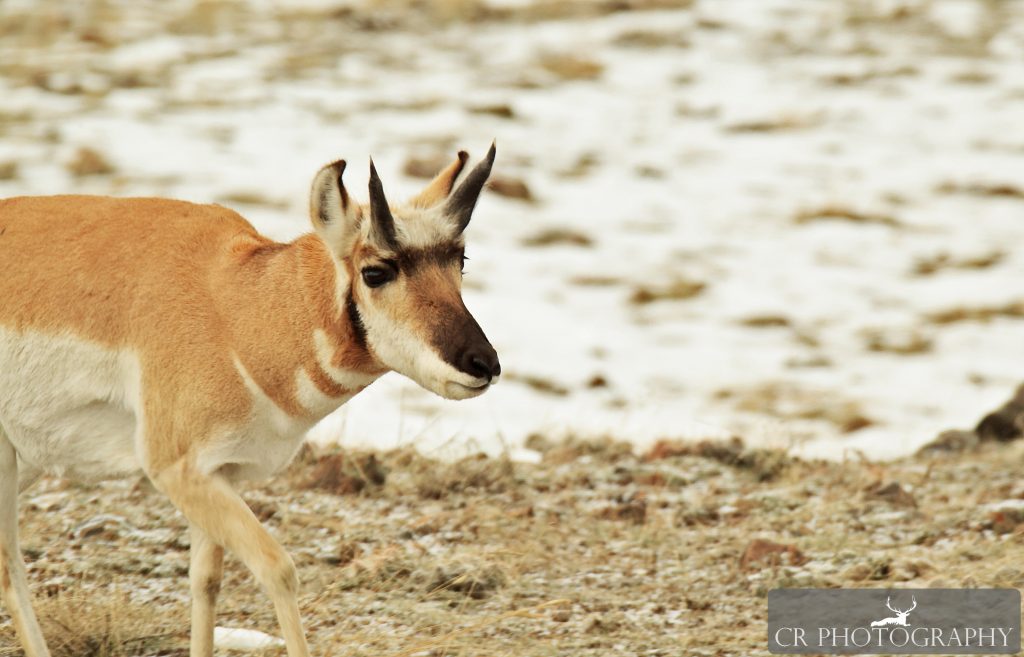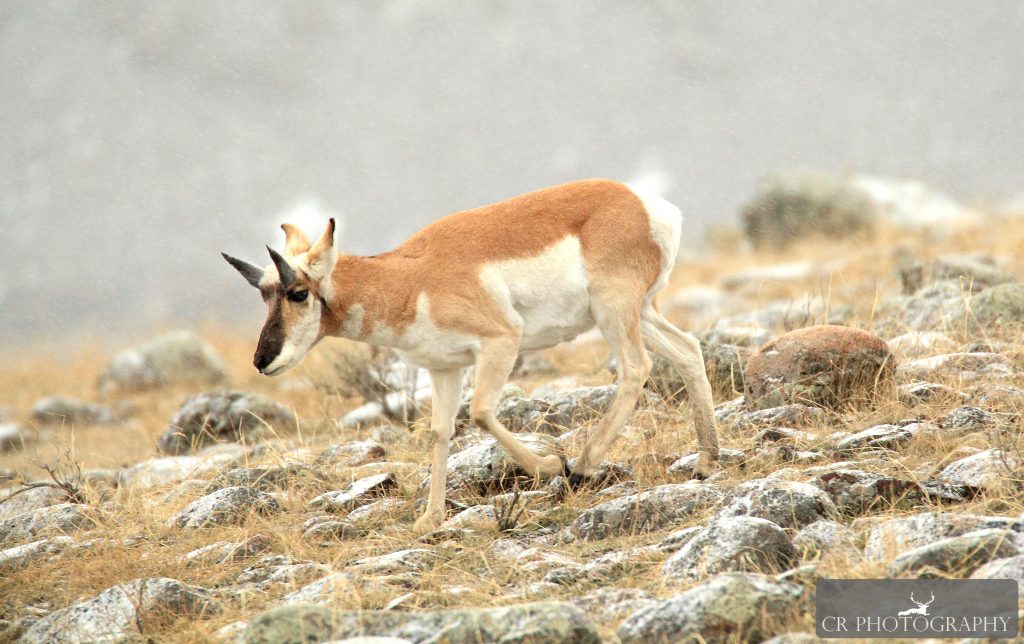There is no doubt that pronghorn, commonly called “antelope,” are one of the most unique animals on the continent and they can easily become an obsession. Over the last few years, I have personally spent a great deal of time watching pronghorn in the field. Photographing them, and hunting them, and there is still so much to learn. Last summer, I watched a small herd in the fields below my home in Montana toy with a coyote. As the coyote would move in closer to them, they would run as a herd for about forty-five yards, then turn and look back. The speed and gracefulness of the pronghorn entice people from all backgrounds, and the obsession grows!
Although there are many aspects of the pronghorn that are unique, their horn growth and composition certainly set them apart from many of the animals that they share habitats with, such as the deer and the elk, and puts them somewhat in line with bison, Bighorn sheep, etc. O’Gara and Matson (1975) wrote that the “horns of Antilocapra Americana attracted the attention of early investigators who thought such horns were composed of consolidated hair. Morrison (1961) correctly stated that pronghorn horns were a modified form of skin growth and definitely not composed of consolidated hairs, but references to hair-horns are still common” (p. 829).
While this article was written in 1975, the misconception about the composition of their horns is still prevalent. Even among many who have spent a great deal of time observing the species. For those who have taken a pronghorn buck, looking at the base of the horn is what can often cause this confusion. At the base, hair will often grow into the horn (the sheath) as it hardens. This leaves the impression that the sheath is itself composed of hair.

Pronghorn do not shed and regrow their horns in the same way that deer and elk do. Nor do they do so during the same months. For pronghorn, there is an inner core that is composed of bone (similar horned animals such as Bighorn sheep, Bison, etc.); When creating a Euro mount, the head is boiled and the sheaths are popped off, which reveal this inner core. The sheaths grow around this core and, generally speaking, grow larger each year. Some studies show that this is not always the case and that the age of the pronghorn buck is not always the determining factor in horn size. That being said, such studies are rather limited in scope and should be considered cautiously.
Also unlike deer and elk who grow their antlers from the skull up each year, pronghorn bucks go through a much different process. Oddly enough, new growth starts at the prong and goes upward, which generally happens between November and sometime in March. Then, from March to July, the lower portion (below the prong) joins in and mass is really packed on closer to the skull. During this point, the upper portion (above the prong) can/will continue to grow. As the new growth expands, the old sheath is “popped” off and is then shed. It is uniquely different than a deer or an elk dropping their antlers. The new growth will harden, generally in July (or in that basic timeframe), which is just in time for the pronghorn rut (often late August to early October).
Diet, as with any animal, is a significant contributing factor to not only animal/herd health, but specifically in the formation of the horns in pronghorn bucks. Lubinski & Herren (2000) wrote that pronghorn “are opportunistic feeders, selecting the most palatable and succulent forage available at all seasons of the year,” which means that “forage preferences vary seasonally, yearly, and regionally depending on the availability of desirable species” (p. 5). This includes shrubs, forbs, and grasses, and in “the northern part of their range, sagebrush,” especially during the winter months.
When considering antler growth in other species, such as mule and whitetail deer, feed is readily available during spring and summer. This time of year tends to be their peak months for antler growth. For pronghorn, their primary horn growth timeframe is November to August. A significant portion of the growth takes place during the cold winter months. For their northern range, this means that winter can greatly impact horn growth. Colder, harsher winters with less access to vegetation means not only winter kill, but less nutrition for horn growth in the bucks.
 This past winter (2017-2018), some areas of Montana endured a very difficult winter. One area that I’d hunted for pronghorn suffered an approximate 68% loss in their herds due to winter kill. A property I hunted in the early fall of 2017 and saw dozens of antelope yielded no animals in the 2018 rifle season. However, other areas of Montana where the winter was at least marginally better allowed for larger herds to persist. The areas that I bow hunted this year were overrun with bucks of varying size and the pronghorn have now herded up into groups of 100 or more animals.
This past winter (2017-2018), some areas of Montana endured a very difficult winter. One area that I’d hunted for pronghorn suffered an approximate 68% loss in their herds due to winter kill. A property I hunted in the early fall of 2017 and saw dozens of antelope yielded no animals in the 2018 rifle season. However, other areas of Montana where the winter was at least marginally better allowed for larger herds to persist. The areas that I bow hunted this year were overrun with bucks of varying size and the pronghorn have now herded up into groups of 100 or more animals.
Pronghorn are definitely unique and offer the enthusiast unlimited amusement. From watching and photographing the frolicking fawns in the tall grasses of spring to scouting out good bucks and then hunting them later in the year. Their distinctive horns and growth patterns only add to the study of this iconic western creature, and it is clear that winters, vegetation, and even water can greatly impact their yearly routines.











































